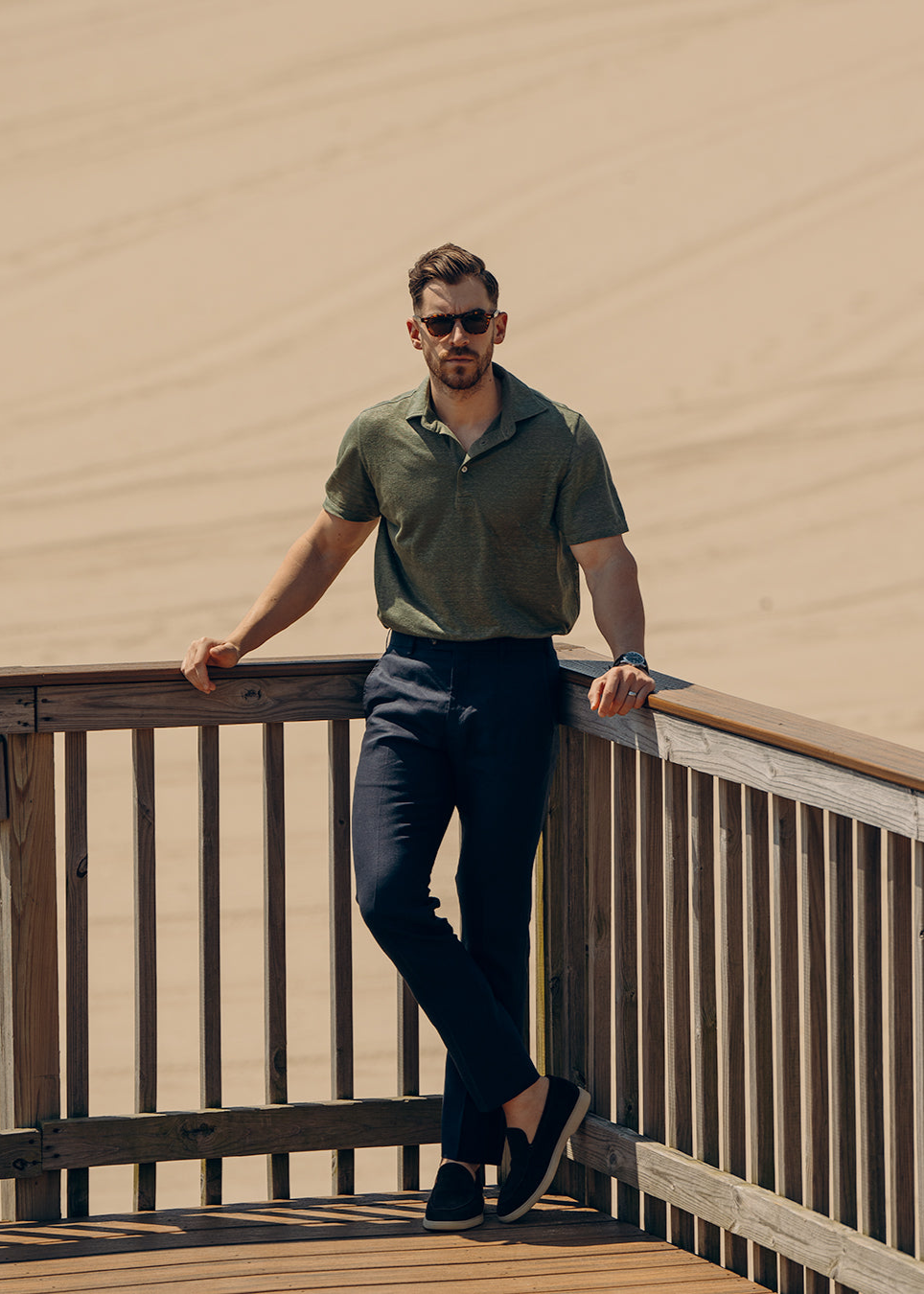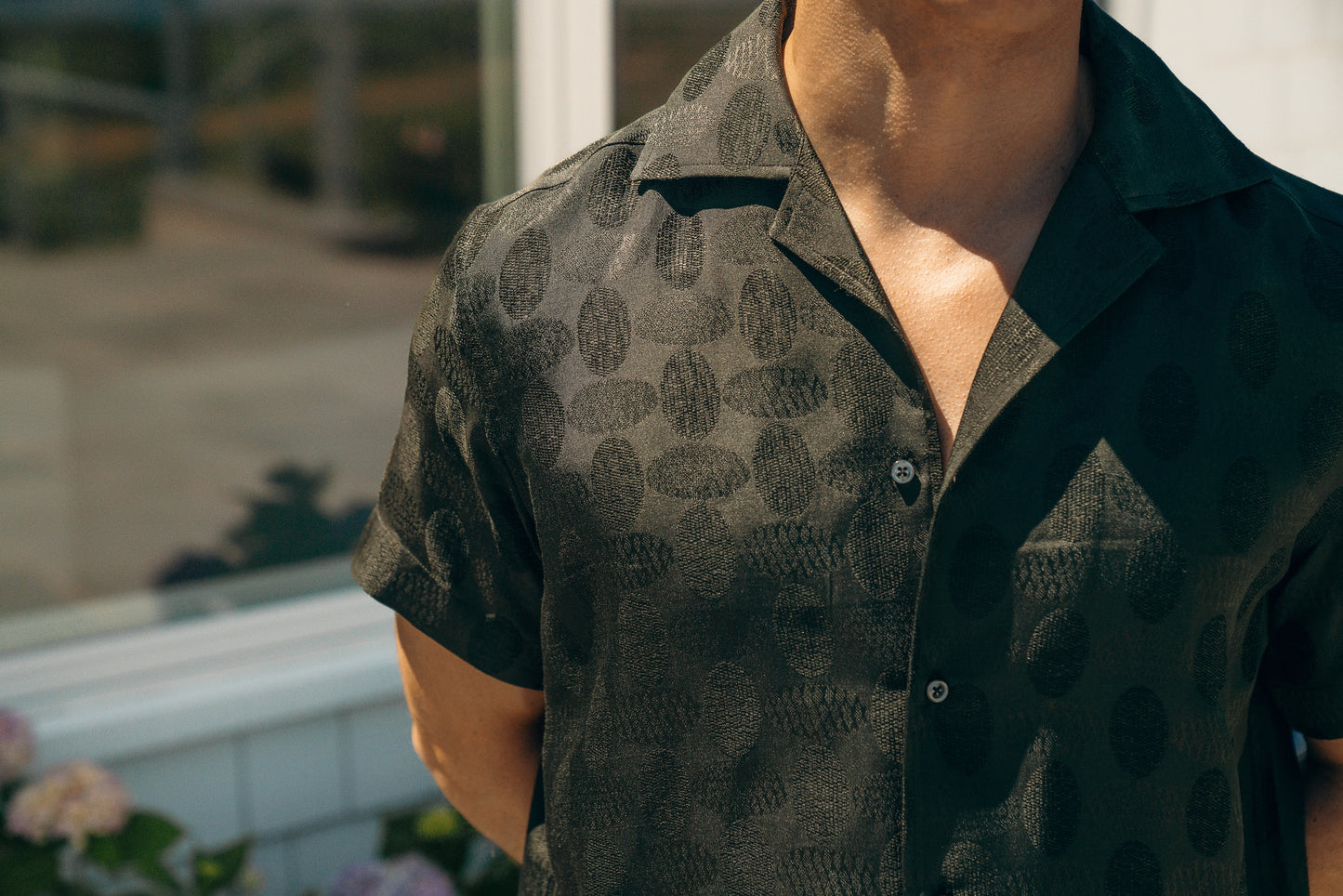The past few years that I’ve been working for WvG, we’ve been working with some of the best factories in the world. While they are very different in what they do (knits, shirts, pants, etc...) they all have something in common: they use the best machinery on the market.
They know that since we live in a very competitive world, they have to be able to beat the competition. That is why all of our factories go the trade shows to buy new machines that make their lives easier, update their technology regularly and have specialized workers to run the software required by the machines. And for the most part, that is the standard across the board, except, of course, for Fernando.
Fernando is really one of a kind, he is like Christopher Lambert in Highlander, the last of the Weavers. His factory is special, it is almost a museum with machines that are almost 60 years old and still working. He has no computers, no electronic machines: nothing modern at all.

Entering his small factory, you are struck by the huge mechanical looms fixed to the roof and by the noise, and believe me, those looms are loud. Fernando was kind enough to turn them off and give Mauro and I a tour. The factory is divided into two big rooms. The first room is where the four looms are placed. The second room is where yarn is stored as well as the warping machine.

I would like to say how lucky we are to be able to work with him, and not only because his work is pure art, but because he will not work with you if he doesn’t like you. I’m not kidding. He refused requests from some of the biggest brands in the world because he didn’t like the person he was talking to or he didn’t like what he had to make. He doesn’t care who you are or how much money you have, if he doesn’t like you, he won’t work for you. You can be Queen Elizabeth. He doesn’t care.
Fernando inherited the factory from his mother, who opened it in the 50s. She started very small, weaving on manual looms. Once she started getting bigger she was finally able to buy a mechanical warping machine. It was 1964 and that very same warping machine is still making the warp today, after 58 years. In 1967 she bought 4 mechanical looms and the technological updates stopped there. These machines have been working everyday for almost 60 years.
I asked Fernando a few questions.
Q: Why do you continue using machines so old, when he can work faster, easier and more efficiently with modern technology?
A: It is a series of factors and there’s not a single answer. I started working here when I was 10. I helped my mom keeping an eye on the machines and she taught me everything about weaving. I knew that weaving was my future, so I went to a vocational school where I studied mechanics, just in case the machines needed to be fixed. After graduating, I started working full time, and after my mother retired I became the boss. I spent over 20 years learning how to properly operate the machines and they are special to me. They are witnesses of the past. They are old but they run perfectly. I could buy modern machines and be just like everybody else but I prefer to keep my machines and be a caretaker of the past.

Q: I understand you are emotionally attached to these machines but can they keep up with the modern standards?
A: I would be lying if I said yes, modern machines are faster. Oversimplifying, you secure the yarn, you click a button and they go. My machines need time to be set properly, but once they are set, they make a good amount of meters per day. Of course I can’t compete with the quantities required by modern standards, that’s why I’m specialized in making things that modern machines struggle with, like selvedge fabrics and jacquards.
Q: And what if one of your machines break? Are spare parts still available?
A: The company that made these machines doesn’t exist anymore. Finding spare parts is impossible because these are probably the last machines still running. If something breaks, I have to build the replacement parts myself. I have a small workshop inside my factory with a lathe and everything I need. In the past I tried to contact many factories but in the end I realized I had to make everything myself if I wanted to keep using these machines.

Q: Do these machines break often?
A: No, they are very reliable. I just do the regular maintenance, keep them oiled and they run like a Swiss clock. You might think that since they are old, they break a lot compared to modern machines, but this is not the case. Back in the days, things were built to last, and as you can see, they are still here after 60 years. In my opinion, modern machines are far more delicate than the old ones, they have integrated circuits and lot of electronics. If something breaks you have to call the technician, it takes a lot of time to find the cause of the malfunction, and very often you have to change the whole circuit board.
Q: I saw that you have these big cardboards with holes, what are they?
A: These are cardboards I make to weave jacquards. Modern machines require a program made on a computer. You draw something, a rose for example, you upload it into the machine and it’s done. Of course you have to know how to do that, but an experienced person can do that in a few hours. It took me one week to make this rose (see picture below).

I start from a paper sheet with a grid on it, I mark every single square with dots and Xs. Once the paper sheet is complete, I start puncturing the cardboard sheets following the paper I made before.
This process takes around one week, depending on the drawing. Some may take more than one week if they are really intricate. Once the cardboard is complete, I attach it on the loom, place every thread into its hole, and start the machine. If the pattern is correct, I have a beautiful rose. If not, I wasted one week of my life and I have to start all over again. After all these years, I’m quite good at this and, thank God, everything goes smooth on the first try.
Q: Can these machines weave all kind of fabrics or do they have limitations ?
A: With these machine I can basically weave all kinds of fabrics. I am able to work with linen, cotton, wool, silk, cashmere, blends, etc... I can also make selvedge fabrics, which can be very hard to find nowadays. I can also make all kind of thicknesses, from very thin fabrics too very thick. It’s just a matter of knowing how to set the machines. I can use the finest silk to create a spectacular scarf or I could use a beefy cotton thread to make some hardy denim.
Q: Do you work here all by yourself?
A: I work here with my son. He’s been working with me for ten years and for now I trust him on the looms. The warping machine is still off-limits for him since it’s very complicated and dangerous to operate. If you mess up with the warp, you mess up big time and there’s no way of fixing what’s done. That’s why I’m still teaching him how to use it and I don’t let him operate when I’m not there. This warping machine is also very dangerous. It has a safety feature that stops the spinning if a thread breaks, but it doesn’t stop if your hand, or even worse you, get caught in it. Unfortunately, warping machines in general are a very common cause of death among weavers. In 1964 we didn’t have modern safety standards.

We talked a lot, he showed us the pieces he makes (scarves, towels, blankets, etc...). He told us many interesting facts that I will tell you in a follow up story. Right now, I’m just overwhelmed by all of it.
I love art in general, I drive a 1969 Fiat 128 and I still shoot on film. You may call me a dinosaur. That’s why finding another dinosaur in this era is special for me. We are so used to making things fast, we sell our objects as soon as they get a small upgrade, we try to find a way to make more money, and we forget that sometimes it’s better to slow down. It’s not where we’re going, but how we get there. Fernando lives in his own bubble, he is still living in the 70s, and from what I see, he didn’t go wrong. He has his machines and if they break he fixes them and he doesn’t buy new ones. You can’t get something more artisanal that that. When you buy a scarf made by him, you’re buying history. You’re buying the passion he puts into his job, and you’re becoming part of his world.



